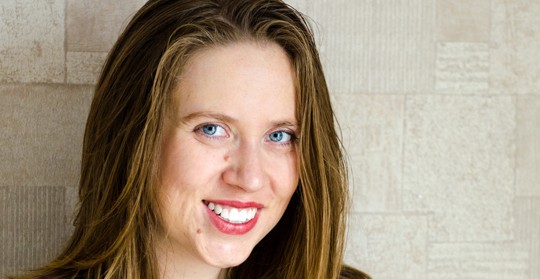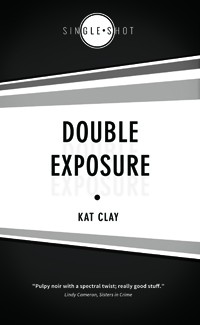 Australia’s Crime Factory has been on our radar for some time. Known for producing a quality fiction magazine, more recently the company’s series of indie novellas have really caught our attention. In the past we’ve reviewed both Freight by Ed Kurtz and Saint Homicide by Jake Hinkson, for instance. With Double Exposure, Kat Clay will be the first Australian author to take part in the series, and the first female writer too. She has dropped by for a chat. Please be sure to give her a great big crimefictionlover welcome….
Australia’s Crime Factory has been on our radar for some time. Known for producing a quality fiction magazine, more recently the company’s series of indie novellas have really caught our attention. In the past we’ve reviewed both Freight by Ed Kurtz and Saint Homicide by Jake Hinkson, for instance. With Double Exposure, Kat Clay will be the first Australian author to take part in the series, and the first female writer too. She has dropped by for a chat. Please be sure to give her a great big crimefictionlover welcome….
First of all, can you tell us a little about yourself?
I’m a femme fatale from the wrong side of town… No really, I’m a fiction writer and photographer from Melbourne, Australia. I’m passionate about all things genre, whether it’s crime, fantasy or sci-fi. Apart from being creative, I’m an avid traveller, having been to 30 countries and I’ve lived in both France and South Korea. I also collect vintage clothing, with several veiled hats worthy of a classic femme fatale, and an eclectic dress sense which lingers somewhere between Lauren Bacall and Princess Leia.
Why would our readers be interested in Double Exposure?
Double Exposure is my love letter to classic crime stories. My goal is always to write books for book lovers, because those are the sorts of books I like to read, where you can tell the author is passionate about the written word and putting the best damn thing on paper. If you’re a keen cinefile, you’ll probably also enjoy spotting all the movie references. But more so, I wanted to write a noir story that broke down women’s roles in crime fiction. I love the femme fatale, but sometimes she gets a bad rap. Double Exposure would certainly appeal to fans of James Ellroy, Megan Abbott and the classic hardboiled writers like Dashiell Hammett.
There is a strong weird fiction element to Double Exposure. What creative choices were behind this? What does it add to the story?
I’m really passionate about genre writing, and my love of crime is as strong as my love of dark fantasy and weird fiction. There’s been a number of works in the area which crossed over between the two such as Jeff VanderMeer’s Finch and China Miéville’s The City and the City; James Ellroy even dabbled in what I consider weird fiction with his novella Shakedown. I find that the sinister elements of noir meld so well with the unexplained nature of the weird.
I wanted to open up readers to new genres; for the crime fans, they might discover something new, and vice versa. Hardboiled noir also provided the familiar framework to hang the stranger elements of the story, so that the reader would come along for the ride, rather than get lost in the concepts. In exploring The Photographer’s PTSD, I wanted him to have a surreal, insomniac experience, so that his own fatigue began to affect his vision of reality, and leave enough ambiguity for the reader to question his experiences.
 Your central protagonist is only ever known as The Photographer. Why is he never given a name?
Your central protagonist is only ever known as The Photographer. Why is he never given a name?
I grew up watching Sergio Leone films with my dad, so in some ways it’s a nod to the Man with No Name, constantly wandering, enforcing justice in a lawless world. After workshopping early drafts, people were divided as to whether he should have a name or not, and for a time he did have a name. But after Cameron from Crime Factory looked at an early draft, we both agreed he should just be The Photographer. And I think this is especially poignant as a man whose identity is made up by looking at other people all the time, as he struggles to define himself.
The story arc is about a man changing his attitude towards women. In Double Exposure, I tried to break down the three archetypes of women found in crime fiction – the old crone, the femme fatale, and the innocent victim. The old crone manages only a slim appearance at the start and in a brief crime scene. Through meeting Miss Loretta Marne, he comes to understand that women are far more complex than how they are often depicted in crime stories. It also looks at the idea of the male gaze, that much of what we perceive in art is seen through the loupe of men. But I was also careful not to emasculate the character; it’s really The Photographer’s journey.
Your other career is in photography. Did you find being creative in one area helped or hindered you when doing something different?
Certainly, Double Exposure was heavily influenced by my love of photography and film, and I loved researching the historical aspects of this story. Having an understanding of photography certainly helped writing a character who is a photographer, although it was difficult to transpose those skills back in time to the 40s, since so much of photography today is digital. One thing I found out in my research was how incorrect the depictions of historical photography are. Taking multiple shots was a slow process, especially on the bulky Speed Graphic cameras of the 40s. Photographers also had to change the flash bulb after each use. And you usually can’t pull a negative out of the back of a camera in broad daylight… it only becomes a negative once it’s been developed.
There are many writers who are also creative in other aspects of their life; I remember seeing the photographs by southern author Eudora Welty in the Jackson Art Museum. I think the only hinderance of being creative in multiple areas is finding time to balance both passions, and sometimes you will find seasons where you focus on one or the other.
I spend a lot of time reading about how to be creative, and for both photography and writing there are meditative aspects, whether it be waiting patiently for a cloud to break open or focussing on the words on a page. For anyone passionate about writing, I’d urge you to explore different aspects of art, simply because it can challenge the way you approach the creative process.
Can you tell our readers about what is next for you? Will there be more crime fiction?
I’m thrilled to have received a grant from the Melbourne UNESCO City of Literature to travel to the World Science Fiction Convention in August. I’ve also been working on a historical mystery novel called The Memory of Blood for eight years… it feels like too long! It’s come out of my interest in the origins of crime and horror – Edgar Allan Poe, Arthur Conan Doyle, Wilkie Collins. I’m very much attracted to the historical aspects of crime – it’s also much more thrilling to write in eras without mobile phone coverage. Plus the fashion was so much better. I’ve got some other noir short story ideas percolating, although the idea for Double Exposure percolated for three years in scraps and fragments before becoming the complete work it is now.
You can buy Double Exposure here.







